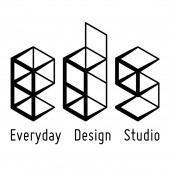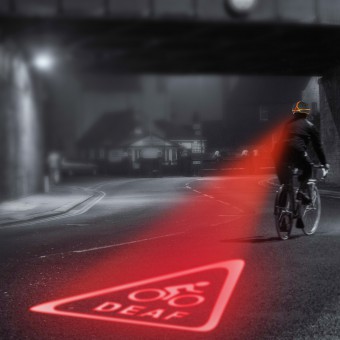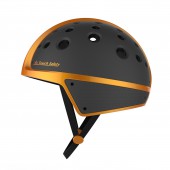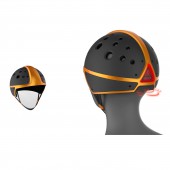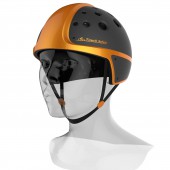DESIGN NAME:
Safety Cycling
PRIMARY FUNCTION:
Riding Helmet
INSPIRATION:
Because of the deaf’s listening problem, they can’t hear the car’s trumpet when they are riding so that they don’t know transportation behind them. Meanwhile, the drivers don’t know the riders are deaf and the drivers can’t take safety measures. On account of not realizing bilateral messages, it leads to severe traffic accidents.
UNIQUE PROPERTIES / PROJECT DESCRIPTION:
In order to protect the deaf’s riding safety, we design this type of helmets. The LED lamp on the back of the helmet can actively project the warming lights on the road, which can attract the attention of the driver. When a vehicle comes near, the radar detector can receive the signal and deliver the messages to the deaf by shocking on the left and right sides of the helmet. It can remind the deaf and the driver simultaneously to avoid an accident. This helmet sets up an active safety relation between the driver and the deaf. Therefore, it has both active and passive safety properties.
OPERATION / FLOW / INTERACTION:
First, when a deaf is cycling on the road, the LED lamp can switch on to warning drivers and pedestrians. Second, when cars come near, the radar detector receives the signal that a vehicle is near coming. Third, the embedded radar deliver the message to deaf through shocking on the two sides of the helmet. Fouth, vehicles and deaf cycler safely keep on the road.
PROJECT DURATION AND LOCATION:
The project started in September 2016 in Vancouver and finished in April 2017 in Vancouver.
|
PRODUCTION / REALIZATION TECHNOLOGY:
The shell material utilizes polycarbonate material and polish lacquer painting. Because PC material has better adaptability of temperature. The internal filling material adopts ESP foam plastics.
SPECIFICATIONS / TECHNICAL PROPERTIES:
L350mm*W260mm*H270mm
TAGS:
Helmet, design for vulnerable groups, deaf, safety and protection
RESEARCH ABSTRACT:
The research question of this research is how the design of technology can protect deaf cycle in their everyday lives? We investigate more than three different ways to design this computational artifact with designers, engineers, and researchers get together. We hope this final prototype can be deployed in Vancouver for about 6 mouths. Furthermore, we want to evaluate the design processes through research in this ethnographical quantitive study.
CHALLENGE:
How to design a technology that can help deaf hear the trumpet when they are cycling on the road. Simultaneously, how to augment the interaction between drivers and deaf cycler through the design of technology. Meanwhile, how to find a good material to meet the outdoor use. After all, the challenge of the design is how to balance those aspects effectively.
ADDED DATE:
2017-06-15 07:54:11
TEAM MEMBERS (1) :
Ce Zhong, Jiajin LI, Xiaotong Sun
IMAGE CREDITS:
Image #1: Ce Zhong
Image #2: Ce Zhong
Image #3: Ce Zhong
Image #4: Ce Zhong
Image #5: Ce Zhong
|
